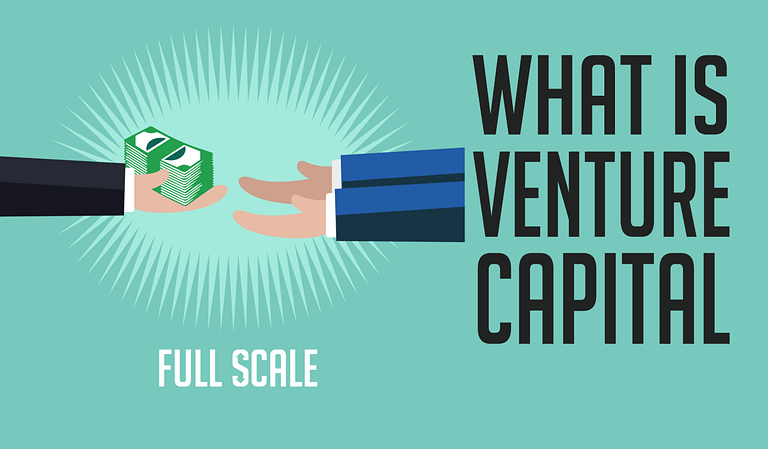Are you looking for some financial assistance to mobilize your startup idea? You might want to look into venture capital fund, a type of investment that funnels growth for new startups with high-growth potential.
What do Instacart, Airbnb, Stripe, and WeWork have in common? They are all valuable companies backed by venture capital funding. They were once fledgling startups that began with an idea to drive innovation in the market. Today, they are celebrated for their successful trajectory, from their humble beginnings to becoming a behemoth in their industries.
These archetypal, against-all-odds stories can rouse anyone’s entrepreneurial imagination. However, reality dictates that having an ambition can only get you so far. These companies wouldn’t be made possible without financial reinforcements.
Specifically, you need capital to start a business. Capital is what pays for rent, payroll, equipment, suppliers, and other assets that activate business operations. If your savings is not enough, you might want to tap capital investments externally. One of the best sources of capital for startups is venture capital.
What is a Venture Capital Fund?
A venture capital fund is a type of financing that provides entrepreneurs and small businesses with access to funds. It is managed by venture capital firms such as Sequoia Capital, Y Combinator, and Accel.
These venture capital firms manage the money from investors who seek private equity (ownership of assets) in a startup or small/medium companies with a strong growth outlook.
Generally, venture capital comes from high net worth individuals, pension funds, insurance companies, investment banks, and other private entities. While VC investments are given as money, the contributions can sometimes be in a form of technical or managerial expertise.
VC funds invest in startups or small companies with the high-return profile. They base their investment decisions on the startup’s assets, size, and product development stage.
It’s one of the riskiest types of investment vehicles. Oftentimes, the possibilities of these startups to succeed are extremely uncertain. The venture capital fund is also illiquid. This means that you can’t sell or redeem your shares into cash. In fact, venture capital investments may take several years to generate a return.
However, a venture capital fund can achieve higher returns when the odds are right. That is, if they fully understand the value of the startup and if there’s a profitable market for them.
Types of Venture Capital Fund
A venture capital fund may specialize in any of these types of funding. They may also provide funding for all the entire stage of a startup’s life cycle.
Seed Capital
For new startups, VC funds offer seed capital to them to help get started. Usually, VC firms don’t fund at this stage. If they do, it’s mostly a small amount. The capital may be used for finance product research and development and pay for administrative costs.
Startup Capital
Startups at this stage may already have their sample products and understood the size of their market. They need this capital to scale. They may use it for recruitment, additional funding for market research, and improving product distribution.
Early Stage Capital
Two to three years in, a startup may already have taken off. They have a solid management team and sales are starting to pick up. VC funding in this stage can boost sales further and increase operational efficiency.
Expansion Capital
From the name itself, an established company may seek venture capital funds to grow its business. Companies at this stage want to enter emerging markets or shore up their marketing strategies. Make sure to search for VC firms that specialize in late-stage financing.
Late Stage Capital
At this point, a company has achieved sales targets and revenues and is looking to exceed it. They are in a good position to hire for second-level management. They may seek additional funds as their working capital.
Bridge Financing
A phenomenally successful company may look into opportunities for mergers or acquisitions (M&A). Some VCs target at the end of a business spectrum.
Additionally, some VCs specialize in share buyouts, recapitalization, and initial public offering (IPO). For companies that want an IPO, venture capital firms can provide bridge financing. It’s short-term financing to enable companies to manage costs when going public.
People involved in a Venture Capital Fund
The VC fund industry has four primary players, namely:
- Entrepreneurs – or startup owners looking for capital funding
- Investors – they can be wealthy individuals or financial institutions aiming for high returns
- Investment banks – they look for companies to sell
- Venture Capitalists – they provide a viable market for the other three players in the VC scene
Venture capital firms can mitigate their risks by investing with other VC firms. It’s rare for a VC to singlehandedly finance one startup. Instead, venture capital firms co-invest with other groups responsible for the stages of startup funding.
An obvious benefit of this VC relationship is portfolio diversification. It’s a practice of spreading your investments to balance the risks and rewards in an investment portfolio. By sharing the responsibility of researching and managing the deal, this eases the workload on VC partners.
Return on Investments and Exit Strategies
The shelf life of venture capital funding doesn’t last long. Venture capital funds allow investors to put their stake on high-growth companies until they arrive at a certain size and valuations. Eventually, these companies are either sold to bigger corporations or on public equity markets (such as an IPO deal) to increase their liquidity.
Essentially, venture capitalists invest in the startup’s idea, sustain their growth for a short period, and exit when the right time comes. Unlike bonds, stocks, and other types of investments, the venture capitalist can only generate their returns when they exit their position.
Here are the top three VC exit strategies:
- Direct sale of shares – The VC fund sells its share in an investment company (the startup that VC firms invest in) to other investors or an investor sells its shares back to the investment company.
- Acquisitions – In an acquisition deal, a large company can opt to buy the entire stake of a startup. This transaction leads to buying out the VC fund.
- IPO (Initial Public Offering) –This is the time when an investment company decides to sell its shares to the public (such as in the stock exchange). In doing so, the venture capital fund sells its shares in the company.
Funding Today’s Startup Growth
Considering the risky nature of venture capital funds, it only makes sense to weigh the risks versus the potential rewards. As startup owners, it’s best to do your homework before accessing funds through a venture capital firm.
Now that you understand how VC works, it’s time to set your startup dream into motion. If you need an additional push, maybe we can help.
Full Scale is the brainchild of co-founders Matt DeCoursey and Matt Watson. What started as a small software development company in KC has grown to more than 100 employees in two years. We help clients grow their startups by providing them with top-notch software experts in the industry.
We have a strong pool of web and mobile developers, project managers, web designers, and marketing specialists ready to work on your projects.
Talk to us to know how we can assemble your rock star development team quickly and affordably.



